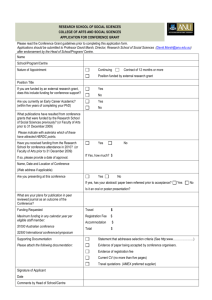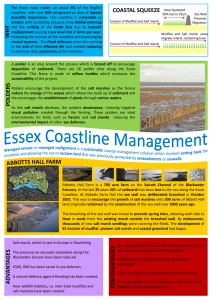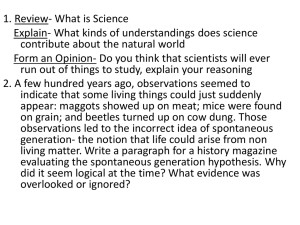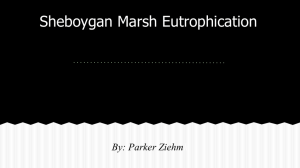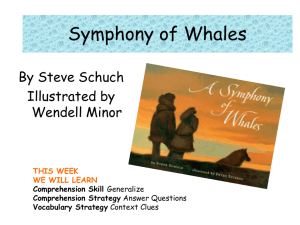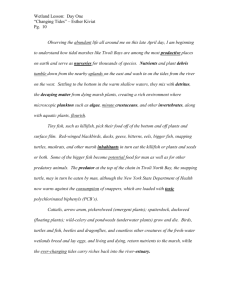Salt Marsh(mallow)Energy Flow - College of Arts and Sciences
advertisement
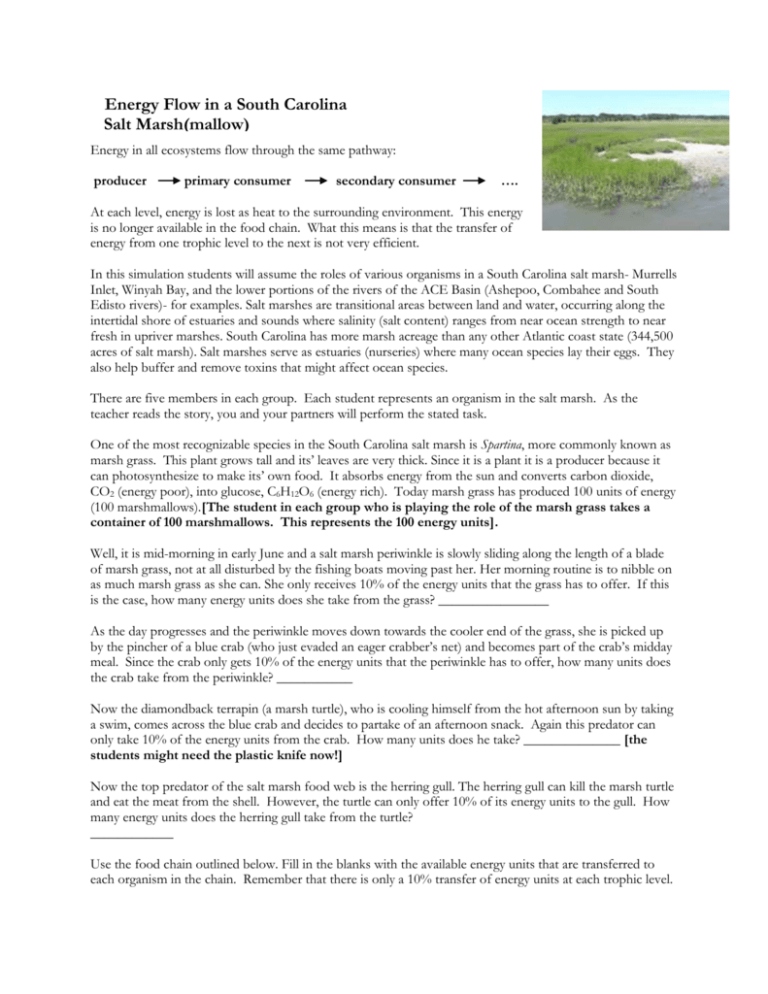
Energy Flow in a South Carolina Salt Marsh(mallow) Energy in all ecosystems flow through the same pathway: producer primary consumer secondary consumer …. At each level, energy is lost as heat to the surrounding environment. This energy is no longer available in the food chain. What this means is that the transfer of energy from one trophic level to the next is not very efficient. In this simulation students will assume the roles of various organisms in a South Carolina salt marsh- Murrells Inlet, Winyah Bay, and the lower portions of the rivers of the ACE Basin (Ashepoo, Combahee and South Edisto rivers)- for examples. Salt marshes are transitional areas between land and water, occurring along the intertidal shore of estuaries and sounds where salinity (salt content) ranges from near ocean strength to near fresh in upriver marshes. South Carolina has more marsh acreage than any other Atlantic coast state (344,500 acres of salt marsh). Salt marshes serve as estuaries (nurseries) where many ocean species lay their eggs. They also help buffer and remove toxins that might affect ocean species. There are five members in each group. Each student represents an organism in the salt marsh. As the teacher reads the story, you and your partners will perform the stated task. One of the most recognizable species in the South Carolina salt marsh is Spartina, more commonly known as marsh grass. This plant grows tall and its’ leaves are very thick. Since it is a plant it is a producer because it can photosynthesize to make its’ own food. It absorbs energy from the sun and converts carbon dioxide, CO2 (energy poor), into glucose, C6H12O6 (energy rich). Today marsh grass has produced 100 units of energy (100 marshmallows).[The student in each group who is playing the role of the marsh grass takes a container of 100 marshmallows. This represents the 100 energy units]. Well, it is mid-morning in early June and a salt marsh periwinkle is slowly sliding along the length of a blade of marsh grass, not at all disturbed by the fishing boats moving past her. Her morning routine is to nibble on as much marsh grass as she can. She only receives 10% of the energy units that the grass has to offer. If this is the case, how many energy units does she take from the grass? ________________ As the day progresses and the periwinkle moves down towards the cooler end of the grass, she is picked up by the pincher of a blue crab (who just evaded an eager crabber’s net) and becomes part of the crab’s midday meal. Since the crab only gets 10% of the energy units that the periwinkle has to offer, how many units does the crab take from the periwinkle? ___________ Now the diamondback terrapin (a marsh turtle), who is cooling himself from the hot afternoon sun by taking a swim, comes across the blue crab and decides to partake of an afternoon snack. Again this predator can only take 10% of the energy units from the crab. How many units does he take? ______________ [the students might need the plastic knife now!] Now the top predator of the salt marsh food web is the herring gull. The herring gull can kill the marsh turtle and eat the meat from the shell. However, the turtle can only offer 10% of its energy units to the gull. How many energy units does the herring gull take from the turtle? ____________ Use the food chain outlined below. Fill in the blanks with the available energy units that are transferred to each organism in the chain. Remember that there is only a 10% transfer of energy units at each trophic level. Marsh grass _____ units Periwinkle ____ units Blue crab ____ units Diamondback terrapin _____ units Herring gull ____ units Answer the following questions: 1. Based on what you have learned about food chains, the transfer of energy through a food chain, and the role of producers in the food chain, why is there more marsh grass in the salt marshes than periwinkles (herbivores)? 2. If the periwinkles died, what would happen to the predators (carnivores)? 3. If the crab wants to get as many energy units from the periwinkle as the periwinkle receives from the marsh grass, how many periwinkles does the crab have to eat? Why does he have to have this amount? 4. Since the herring gull is the top predator, what happens to all the energy units that he consumes that he does not eventually use? Are these energy units “lost” from the food chain? Explain. 5. Using the energy pyramid below, place each salt marsh organism on the correct trophic level. Beside each level on the right put the name of the trophic level at the correct level (producer, primary consumer, secondary consumer, etc). On the left side put the correct percentages of the transferred energy units on the correct levels. % energy units transferred trophic levels Teacher Notes: Materials needed for each group of 5 students: 100 mini (regular not jumbo) marshmallows pre-counted into a transparent cup (16 oz or larger), paper plate, etc. 1 plastic knife Paper towels Each student should also receive a copy of the activity so that they can record their answers. Alternative strategies: 1. You could do this as demonstration with one group of students. This would be a great way to introduce the 10% transfer rule and the class could keep up with the transfer amounts on the board, SMARTBoard, etc. 2. A student could read the scenario and the teacher could hand each producer the cup of marshmallows. Answers: Grass has 100 energy units = 100% Periwinkle gets 10 energy units = 10% (.10) of original amount Crab gets 1 energy unit =1% (.01) of original amount Turtle gets 1/10 energy unit (crab cuts marshmallow into 10 pieces and turtle only gets one piece) = .1% (.001) of original amount Herring gull gets 1/100 energy unit (turtle cuts the little piece it has into 10 pieces and gull gets one piece) = .01% (.0001) of original amount 1. producers have to supply all the energy units for the entire food chain 2. if the periwinkles die, the carnivores (predators) will die; they would have no food unless they could eat an alternative diet; but this would cause competition and someone will lose. NO WIN situation! 3. the crab will have to eat 10 periwinkles to get all the energy that 1 periwinkle gets. 4. when the herring gull dies, his biomass is decomposed by bacteria, fungi, etc and the organic matter is returned to the carbon cycle as CO2 to be used by the marsh grass for photosynthesis


